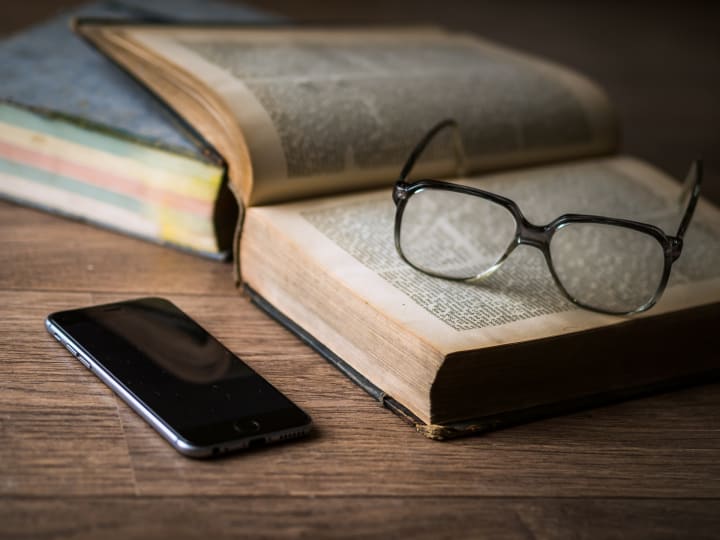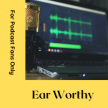Is There A Best Way To Read A Book?
One Sitting? Chapters? A Little Each Day? Multiple Books?

For South Jerseyan Ellen Crain, her book choice depends on her current situation.
“If I’m on vacation, I am definitely doing a beach read,” she insists.
For retired Navy Captain Dave Arnold, reading is done at bedtime when it’s quiet.
“I read a few pages until I feel tired then pick it up the next night.”
For retired school counselor Phyllis Beaufait-Bullock, reading is a marathon, not a sprint.
“I read a few pages every day and like to stop at the end of a chapter.”
“The Kindle has reshaped how I read, “notes Maryland-based entrepreneur Paula Kowalczuk. “I read one book at a time and always finish the book, even if I don’t care for it.”
“If I start a great read like a Michael Connelly or a John Grisham novel,” begins retired school counselor Linda Straga, “I’ll power through it in one day, even if that means reading late at night until I finish.”
For these readers and millions more, reading a book can bring joy, cause us to reflect on our own lives, offer information that can challenge our assumptions and enable us to soar above our daily lives.
Through books, we can battle dragons, solve a cold-case murder, find the perfect romance, relive great moments in history like the American Revolution or empathize with the suffering of others.
Despite the premature eulogy for the death of reading, the Pew Research Center estimates that about 74 percent of Americans “read” books in an electronic, print or audio format. The average American reads about 12 books per year and 65 percent of readers still prefer print books.
According to an index by Eurostat, the United States trails several countries in book reading on a per capita basis, with India topping the world of bookworms followed closely by Thailand and China.
Instead of focusing on the dry statistics on reading, let’s take a closer look at how people actually read books. What are their strategies? Routines? Preferences?

How you read
When technology meant cheap transistor radios and handheld calculators, print books were the single option for readers. Of course, print book readers could prefer the expensive hardcovers or the more portable and less expensive paperback.
The world of print books had its decided advantages. When you visited people’s homes you could check out their bookshelves for insight into their true nature or to start a conversation based on a book you spotted on their shelf such as Fear Of Flying by Erica Jong. Today, of course, with ebooks, people can keep their copies of the Fifty Shades of Grey trilogy carefully hidden away in a digital file while proudly declaring that The Great Gatsby is their favorite novel.
The Kindle – and its snarky little cousin, the Nook -- gave rise to ebooks, which blossomed around the turn of the century and began a cottage industry of worrywarts that “print was dead.” After the novelty of ebooks – and fidget spinners and avocado toast – wore off, an interesting diversion took place in the electronic format world. While e-readers and tablets have grown in popularity, ebooks as a percentage of total book sales have stagnated in the last five years.
The hot new book format is audiobooks. Before the smartphone and wireless earbuds, audiobooks were relegated to the driving commute every day and evening with drivers sliding CDs in and out of their entertainment system at 70 miles per hour. Today, people can listen to the 35-hour unabridged audiobook about Alexander Hamilton by Ron Chernow on their commute, when folding laundry or when trying to hide out from the kids in your redesigned open-floor plan home.
Last year, audiobook sales jumped 16 percent to $1.2 billion, even eclipsing for the first time sales of ebooks.
Nearly a quarter (23 percent) of younger adults, those aged 18-29, say they’ve listened to an audiobook in the past year—up from 16 percent in 2016. The share of college graduates jumped 7 percentage points to 27 percent. High school graduates listening to audiobooks have almost doubled since 2016, from 9 percent to 16 percent. A similar jump happened among rural residents. In the past 12 months, the share increased from 10 percent to 17 percent.
Skimming off the top
How you read books is often determined by your current life situation. Not surprisingly, parents of children under 12 report reading exclusively at night after the children are asleep. Retired adults seem to prefer reading in the morning since most 60+ adults are early risers with energy percolating in the morning before an afternoon nap and then TV time with Jeopardy and Wheel Of Fortune on their “must-see” TV list.
Unattached Millennials break all the rules of consistency, seemingly reading at all times during the waking day. Unrestrained by relationship responsibilities they find a free-flowing randomness to their reading exhilarating and enjoyable with the added benefit that it frustrates time-obsessed baby boomers.
Then there is the question of how fast and completely people read. You have the “I cannot miss a word” readers, the skimmers who seem to flip pages faster Usain Bolt out of the blocks and those who skip any descriptive paragraph that includes more than 20 words.
“I never mastered the art of skimming the pages of a book,” says Ellen Crain. “I also will not suffer through a book if I don’t find interest in it.”
Ellen’s observation brings up two interesting points borne out by recent research. First, readers who can skim tend to finish books no matter how bad they are. Second, ebooks seem to encourage more skimming than print books.
Do readers who skim recall less of the book – its plot, characters, theme – than people who read every word? The science is here is as thin as a Victoria’s Secret model. However, there is evidence that “speed reading” books may not diminish recall but does dampen the overall pleasure of reading.
Some recent studies of audiobooks find that the spoken word can create a more immersive experience for a reader while also revealing that audiobook listeners tend to repeat sections of the book due to external distractions.
Linda Straga describes a scene not uncommon among avid audiobook listeners.
“I just listened to My Lovely Wife by Samantha Downing,” Linda begins, “and it was so good, I found myself driving around simply to listen to more of the book.”
“At the very end of the book, I found myself with five minutes left and several big reveals to happen,” Linda explains, “so I sat in the driveway and listened to the book’s ending.”
The multi-tasker and the free spirit
For people who are always reading a book, two essential questions remain: Do you only read one book at a time? Do you always finish a book you’ve started?
“I only read one book at a time on my Kindle,” says Paula Kowalczuk. “And I always finish a book even if I hate it.”
As for finishing a book, Paula has found a simple method for avoiding books she dislikes.
“With an ebook, I can always read a book sample now,” observes Paula. “If it’s an author I’ve never read before or if I’m unsure about the book I read the sample chapter. If I don’t like the sample, I don’t get the whole book.”
Some readers have a decision point when they will jettison a book.
“I always give a book a chance,” says psychologist Ken Grayson. “Novels tend to begin at a slower pace, especially thrillers. An author has to introduce the characters, set up the conflict and create tension. That all takes time and pages in the book.”
Research shows that readers tend to desert non-fiction at a higher rate than fiction.
“I’ve read bad mysteries but I still have to finish the book because I want to know who the killer is,” notes Grayson.
Ellen Crain reads multiple books at one time and in multiple formats, using print, digital and audio and that habit is growing in popularity.
“It’s not uncommon to find me with an audiobook for my back and forth commute,” begins consultant Evan James, “and a Kindle for reading at a doctor’s waiting room, during a boring business meeting and as a passenger in the car. I save the print book for home on the couch or in bed.”
While reading a book on a smartphone can be an exercise in eye strain and carpal tunnel from swiping through pages so frequently, there are advocates for smartphone book reads.
“I always have an easy read like a breezy romance novel or Agatha Christie mystery on my iPhone,” says Georgia-based writer Janis Berman.
Book reading habits also seem tethered to the vagaries of the weather.
In her 2016 article called Sand Between The Pages by Jenni Avins, she observes that “vacation not only primes us for the pleasure of reading, it can also make the experience more beneficial. In particular, reading literary, character-driven stories can make us more open, empathetic people after we go back to work.“
Reading on a rainy or snowy day also conjures up idyllic images of being curled up on cozy furniture hugged by soft pajamas with a book in hand and hot tea or coffee within arm’s length.
“An all-day soaking rain is an invitation to keep the TV off and dive into a book,” says Evan James.
Portion size
So how do people read? Devouring a book in one sitting or a few pages every day?
Retired Navy Captain Dave Arnold embodies the thinking of a lot of readers.
“It typically takes me about two months to finish a book, reading several pages a day, generally at bedtime,” says Dave. “I may power through a really great book in a few days though, especially if it's a vacation read when I'm not distracted by other demands.”
Retired School Nurse Maureen Skros says, “I only read one book at a time and I like to use chapters as a guideline for my reading routine.”
“I am definitely a reader who uses the chapters to enhance my interest and enjoyment,” says Evan James. “To me, the author developed the chapters to crank up the tension so ending at the end of a chapter when a secret is revealed or a clue is introduced, makes me motivated to read the next day beginning with the next chapter.”
Although reading strategies may vary widely, centuries-old research reveals that people increase the daily pages they read of a book as they get closer to the end.
“I may take a month to read a book,” begins Ken Grayson, “but I’ll read the last 100 pages in one sitting if it’s a good book. For example, I finished the last third of Where The Crawdads Sing by Delia Owens in an evening supported by a flinty Cabernet.”
Although how people read can be radically different, the long-term benefits of reading are plentiful. For example, becoming absorbed in a good read can make it easier for you to relate to others. Literary fiction, specifically, has the power to help its readers understand what others are thinking by reading other people’s emotions, according to research published in Science.
Reading puts your brain to work and those who engage their brains through activities such as reading, chess, or puzzles could be 2.5 times less likely to develop Alzheimer’s Disease than those who spend their downtime on less stimulating activities.
Not only does regular reading help make you smarter, but it can also actually increase your brain power. Just like going for a run exercises your cardiovascular system, reading regularly improves memory function by giving your brain a good workout.
Finally, reading can help you sleep. Creating a bedtime ritual, like reading before bed, signals to your body that it’s time to wind down and go to sleep, according to the Mayo Clinic. Reading a print book helps you relax more than zoning out in front of a screen before bed. Screens like e-readers and tablets can actually keep you awake longer and even hurt your “sleep.
Discussing a life full of writing and reading, famed Western genre author Louis L’Armour once remarked, “Once you have read a book you care about, some part of it is always with you.”
About the Creator
Frank Racioppi
I am a South Jersey-based author who is a writer for the Ear Worthy publication, which appears on Vocal, Substack, Medium, Blogger, Tumblr, and social media. Ear Worthy offers daily podcast reviews, recommendations, and articles.






Comments
There are no comments for this story
Be the first to respond and start the conversation.